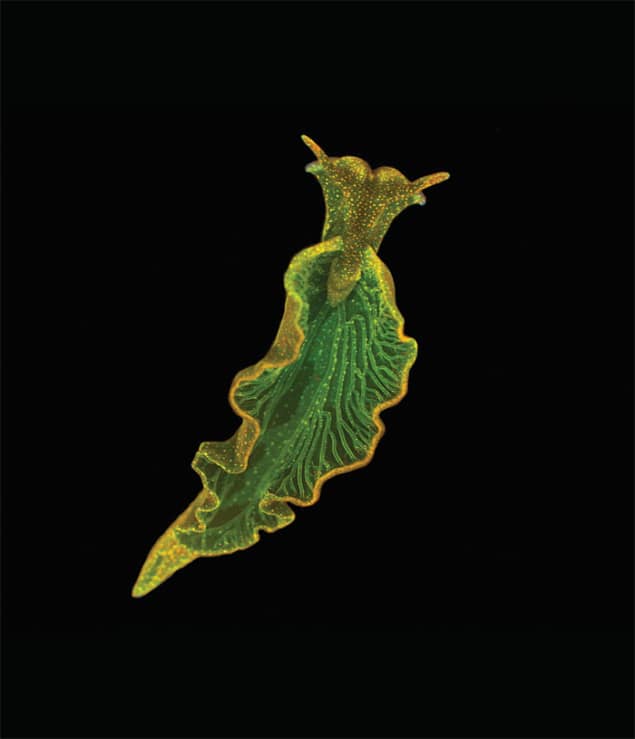Margaret Harris reviews Nanoscience: Giants of the Infinitesimal by Peter Forbes and Tom Grimsey

Nanoscience is a fascinating and diverse field, one that uses tools from chemistry, biology and physics to investigate objects that are bigger than atoms, but smaller than most living organisms. This nanoworld can be stunningly beautiful, and the book Nanoscience: Giants of the Infinitesimal demonstrates this with more than 100 gorgeous images drawn from research across the discipline.
These images illustrate how nanoscience has evolved since 1959, when Richard Feynman proposed that devices such as circuits and motors could be made smaller, citing the nano-machinery of living cells as an example. Feynman’s ideas about miniaturization were soon adopted by the computer industry, with impressive results. However, the authors of Nanoscience, Peter Forbes and Tom Grimsey, suggest that nanoscale biomimicry could have even more far-reaching consequences. The photo above shows a type of sea slug, Elysia chlorotica, that adopts the photosynthetic apparatus of the algae it eats. Once it has done this, the slug can generate energy from sunlight directly, like a plant does. Might such a process form the basis of a new (literally) “green” energy source?

Forbes (a science writer) and Grimsey (a scientifically minded artist) are similarly keen on the potential of existing nano-inventions. Consider aerogels, which they define as “foams from which water has been withdrawn, leaving the structure intact and replacing the water with air”. These materials are the world’s most efficient insulators, as the photo above illustrates. If aerogels could be made more cheaply, Forbes and Grimsey write, “they would revolutionize insulation technology”.
But nanoscience is about more than just new technologies and materials. According to Forbes and Grimsey, research in the field is also “bringing us to the point where life starts: the point where precisely nanostructured chemicals take on the properties of life”. Consider the circuit shown below, which “assembled itself” via a series of random collisions as individual blocks dotted with solder were jumbled in warm water. Although this is not a nanoscale device (the circuit is several millimetres across), nature employs similar self-assembly processes on much smaller scales. For example, a virus known as a T4 phage can reconstitute itself by physio-chemical means after being smashed to pieces in a blender – a feat the authors compare to “assembling a 747 in a gale”. Many scientists suspect that the earliest forms of life may have self-assembled in this way.

Despite all the pretty pictures, this is not a book for beginners. Readers will need a good scientific vocabulary to understand the text, and the authors are not as helpful as one might wish. For example, after a passing reference to “femtosecond pump-probe spectroscopy”, they obligingly explain what a femtosecond is, but leave the far more complicated meaning of “pump-probe spectroscopy” unexplored. However, the book could be helpful for undergraduates considering their next career move, as it provides a good overview of the work that individual nanoscientists are doing to explore this tiny, mesmerizingly beautiful world.
- 2014 Papadakis £24.99 192pp
- www.papadakis.net



